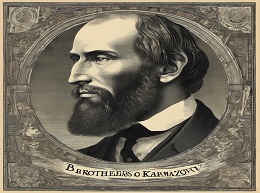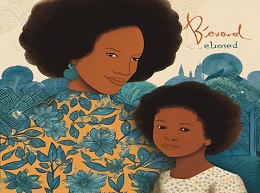Shantaram
Journey Through Bombay: A Detailed Review of Shantaram
Gregory David Roberts Shantaram is a sprawling, epic novel that takes readers on an unforgettable journey through the vibrant streets of Bombay. This semi-autobiographical work, published in 2003, is both a thrilling adventure and a profound exploration of love, betrayal, and redemption. With its richly drawn characters, vivid settings, and compelling plot, Shantaram captivates readers from beginning to end. In this review, we will delve into the novel's plot, characters, themes, and literary techniques, providing a comprehensive analysis of this remarkable book.
From Escape to Embrace
Shantaram begins with the dramatic escape of its protagonist, Lindsay Ford (a fictionalized version of the author), from an Australian prison. Sentenced to nineteen years for armed robbery, Lindsay finds himself on the run, eventually landing in the bustling city of Bombay. The narrative follows Lindsay, who adopts the name Lin, as he navigates the complexities of his new life, forming deep connections and facing numerous challenges along the way.
Life in the Slums
One of the most captivating aspects of Shantaram is its portrayal of life in the slums of Bombay. Lin befriends Prabaker, a cheerful and resourceful guide who becomes his close friend and introduces him to the city's underbelly. Lin's journey takes him to the heart of the slums, where he sets up a free health clinic and becomes deeply embedded in the community. Through Lin's eyes, readers witness the resilience, solidarity, and humanity of the slum dwellers, who despite their hardships, exude a profound sense of dignity and hope.
Crime and Consequences
As Lin becomes more entrenched in Bombay's underworld, he is drawn into a web of crime and corruption. He becomes involved with the city's mafia, led by the enigmatic and powerful crime lord, Abdel Khader Khan. Khader Bhai, as he is known, becomes a mentor and father figure to Lin, guiding him through the murky waters of the city's criminal activities. The novel explores the moral ambiguities of Lin's actions, as he struggles to reconcile his criminal past with his desire for redemption.
Love and Loss
Lin's journey is also marked by intense romantic relationships, particularly with Karla Saaranen, a mysterious and beautiful woman who captivates him from their first meeting. Their tumultuous relationship is a central thread in the narrative, filled with passion, betrayal, and heartbreak. Karla's enigmatic nature and her own dark past add layers of complexity to her character, making her one of the most intriguing figures in the novel.
Lin (Lindsay Ford)
Lin is a complex and multifaceted protagonist. His journey from a fugitive to a beloved member of the slum community showcases his transformation and growth. Lin's internal struggles, his quest for redemption, and his unwavering loyalty to his friends make him a deeply sympathetic character. His narration is filled with philosophical reflections on life, love, and the human condition, adding depth to his character and the novel as a whole.
Prabaker Kharre
Prabaker, affectionately known as Prabu, is Lin's loyal friend and guide. His infectious optimism and unshakeable kindness provide a stark contrast to the harsh realities of life in the slums. Prabaker's tragic fate is one of the most heart-wrenching moments in the novel, highlighting the fragility of life and the impact of unforeseen events.
Abdel Khader Khan
Khader Bhai is a charismatic and complex antagonist. As the head of Bombay's mafia, he is both feared and respected. His philosophical musings and paternal relationship with Lin add layers to his character, making him more than just a typical crime lord. Khader's enigmatic nature and his ultimate betrayal of Lin underscore the novel's themes of trust and betrayal.
Karla Saaranen
Karla is a mysterious and alluring character who embodies the novel's themes of love and loss. Her relationship with Lin is fraught with emotional turmoil, reflecting the complexities of human connections. Karla's guarded nature and her own dark secrets make her a compelling and enigmatic figure, driving much of the novel's emotional tension.
Redemption and Forgiveness
Redemption is a central theme in Shantaram. Lin's journey is one of seeking forgiveness for his past sins and finding a sense of purpose in helping others. His work in the slum clinic and his loyalty to his friends reflect his desire to atone for his crimes. The novel suggests that redemption is a continuous process, marked by both setbacks and triumphs.
Love and Human Connection
Love, in its various forms, is a recurring theme in the novel. Lin's relationships with Prabaker, Khader Bhai, and Karla highlight the different facets of love friendship, mentorship, and romantic love. These connections provide Lin with the emotional support and motivation to navigate the challenges he faces. The novel underscores the importance of human connection in overcoming adversity.
Identity and Transformation
Shantaram explores the fluidity of identity and the possibility of transformation. Lin's journey from a criminal to a respected member of the slum community illustrates the potential for change and growth. The novel also delves into the duality of human nature, as characters like Lin and Khader Bhai grapple with their darker impulses and their aspirations for goodness.
The Clash of Cultures
The novel vividly portrays the clash of cultures that Lin experiences as an outsider in Bombay. His interactions with the diverse inhabitants of the city, from the slum dwellers to the elite, highlight the rich tapestry of Indian society. The cultural differences and the mutual learning between Lin and his friends enrich the narrative, offering readers a nuanced view of Bombay's multifaceted identity.
Vivid Descriptions
Roberts use of vivid and detailed descriptions brings the city of Bombay to life. His portrayal of the bustling streets, the chaotic markets, and the vibrant slums immerses readers in the setting, making them feel like they are walking alongside Lin. The sensory richness of the narrative enhances the immersive quality of the novel.
First-Person Narration
The first-person narration provides an intimate glimpse into Lin's thoughts and emotions. His philosophical reflections and internal monologues add depth to the narrative, allowing readers to connect with his journey on a personal level. The conversational tone of the narration makes the story more engaging and relatable.
Symbolism
Shantaram is rich with symbolism, particularly in its portrayal of the slums as a microcosm of the world. The slums symbolize resilience, community, and the indomitable human spirit. Lin's work in the clinic represents his quest for redemption and his desire to heal both himself and others. The novel's title itself, Shantaram, meaning "Man of God's Peace," symbolizes Lin's transformation and his search for inner peace.
Dialogue
The dialogue in the novel is authentic and reflective of the diverse voices of Bombay. Roberts captures the unique cadences and linguistic quirks of the characters, adding to the realism of the narrative. The interactions between characters are filled with wit, wisdom, and emotional depth, making the dialogue a key element in the storytelling.
Shantaram is a monumental work that combines the excitement of an adventure novel with the profound insights of a philosophical treatise. Gregory David Roberts masterful storytelling, richly drawn characters, and vivid portrayal of Bombay create an unforgettable reading experience. The novel's exploration of themes such as redemption, love, and identity resonates deeply with readers, making it a timeless and universal tale. Whether you are drawn to the thrilling escapades or the profound reflections on the human condition, Shantaram offers a journey that is both exhilarating and enlightening.













